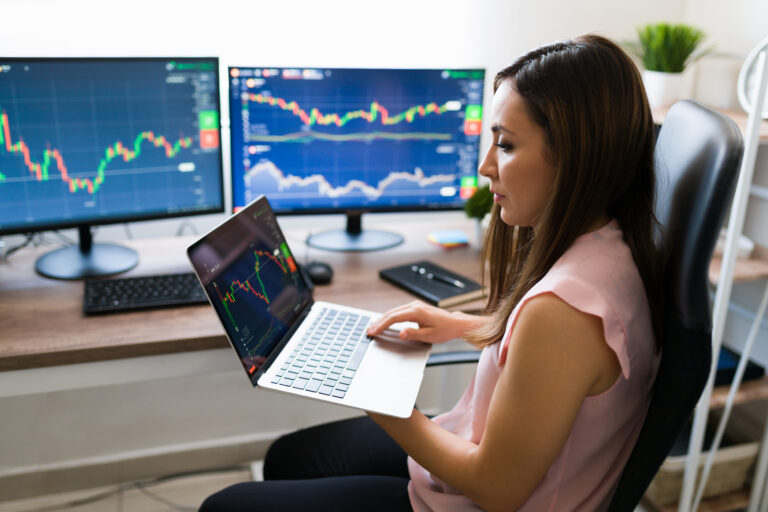Investing Futures: A Smart Path to Financial Growth
Investing futures has become a popular and lucrative strategy for many traders and investors looking to diversify their portfolios. Whether you’re new to the world of investing or an experienced investor, understanding the power of futures trading can open new doors to wealth creation.
Futures contracts allow investors to buy and sell assets like commodities, stock indices, and other financial instruments at a predetermined price for future delivery. This investment method is particularly appealing because of the leverage it offers and the opportunity to profit from both rising and falling markets.
In this blog post, we will explore the basics of investing futures, how it works, and the best strategies to consider when diving into this market. By understanding the essentials, you’ll be better prepared to make informed decisions and take advantage of the potential rewards that investing futures can offer.
What is Investing Futures?
Investing futures involves entering into a contract to buy or sell an underlying asset at a set price on a specific future date. The asset in question can be anything from agricultural products (like wheat or coffee) to financial instruments such as stock market indices, currencies, and even precious metals.
When you trade futures contracts, you’re essentially betting on the future price of an asset. The goal is to profit by predicting whether the price will go up or down. For example, if you believe the price of oil will rise in the coming months, you can purchase a futures contract at today’s price. If the price does rise, you can sell the contract for a profit.
The leverage involved in futures trading allows investors to control large positions with relatively small capital. However, this leverage also means that both profits and losses can be magnified.
How Does Investing Futures Work?
To grasp how investing futures works, you need to understand the basic mechanics of a futures contract. These contracts are standardized agreements that are traded on futures exchanges, such as the Chicago Mercantile Exchange (CME) or the Intercontinental Exchange (ICE).
Each futures contract specifies the asset being traded, the amount of the asset, the price at which it will be bought or sold, and the date of settlement. When you enter into a futures contract, you are committing to either buying (if you are long) or selling (if you are short) the underlying asset at the agreed-upon price on the contract’s expiration date.
One of the most notable features of futures trading is its leverage. This allows you to control a larger amount of an asset than you could if you were to directly purchase it. For example, with a small initial investment, you can control a much larger position in crude oil or gold futures. However, this leverage also means you must be cautious, as price fluctuations can quickly lead to significant gains or losses.
Top 7 Strategies for Successful Investing Futures
- Trend Following Strategy
A popular strategy in investing futures is trend following. The premise of this strategy is simple: you buy futures contracts when the market is in an upward trend and sell when the market is in a downward trend. Trend followers look for patterns and indicators that signal a strong trend in the market and ride the wave until the trend begins to reverse.
Using tools like moving averages, Bollinger Bands, and the Relative Strength Index (RSI), trend followers identify trends early on and make trades based on their predictions. This strategy works best in markets with clear trends, like commodities or indices.
- Hedging with Futures
Hedging is a risk management strategy that is frequently used in investing futures. A hedge helps protect against unfavorable price movements in the market by taking an opposite position in the futures market.
For example, if you’re a farmer who grows wheat, you may hedge by selling wheat futures contracts to lock in a price for your crop. This protects you from potential losses if the price of wheat falls before you harvest your crop. Similarly, businesses that rely on commodities can use futures contracts to secure stable prices and avoid volatility.
- Scalping in Futures Markets
Scalping is a short-term trading strategy that involves making rapid, small trades to profit from minor price fluctuations. Traders who use this method are looking to capitalize on quick changes in the market rather than holding positions for extended periods.
Scalpers often trade in highly liquid markets, such as stock indices or foreign currencies, where they can execute many trades per day. The goal is to accumulate small profits from each trade, which can add up to significant returns over time. Due to the speed and frequency of trades, this strategy requires significant expertise and quick decision-making skills.
- Position Trading for Long-Term Gains
Position trading is a strategy used by investors who prefer to hold their futures contracts for extended periods. Rather than trying to make quick profits from short-term price movements, position traders aim to profit from long-term trends in the market.
Position traders typically use fundamental analysis to evaluate the long-term potential of an asset. For instance, if you believe that oil prices will rise over the next several months due to geopolitical events or supply constraints, you would enter a long futures position and hold it until the price reaches your target level.
- Using the Spread Trading Strategy
Spread trading involves buying and selling two related futures contracts simultaneously to profit from the difference in price. Spread traders generally take a position in two futures contracts with similar assets but different expiration dates.
The most common types of spreads include:
- Intracommodity Spreads: This strategy involves taking a long position in one contract and a short position in another contract of the same commodity but with different expiration dates.
- Intercommodity Spreads: This strategy involves trading related commodities, such as crude oil and heating oil, where price movements are expected to be correlated.
Spread trading reduces exposure to the overall market, as traders are focusing on the price difference between two contracts rather than the price of the asset itself. Learn more about futures spread trading here.
- Risk Management and Stop-Loss Orders
Managing risk is critical in investing futures, especially due to the high leverage involved. One effective way to manage risk is by using stop-loss orders. A stop-loss order automatically triggers a sale when the price of a futures contract reaches a certain threshold, helping to minimize potential losses.
By setting stop-loss orders at strategic levels, traders can protect themselves from significant downturns in the market. Risk management also involves determining the appropriate amount of capital to risk on each trade, maintaining a diversified portfolio, and using a proper position sizing strategy.
- Day Trading Futures
Day trading involves buying and selling futures contracts within a single trading day. This strategy is ideal for traders who prefer short-term opportunities and have the time and expertise to monitor the markets closely. Day traders typically rely on technical analysis, chart patterns, and indicators to make fast decisions.
Day trading futures can be highly profitable, but it also requires discipline and quick thinking. Traders must have a solid understanding of market behavior, along with the ability to execute trades rapidly. It’s a strategy that is more suited for advanced investors who are comfortable with high risk.
Understanding the Risks of Investing Futures
While investing futures can be highly profitable, it’s not without risks. The biggest risk in futures trading is the potential for significant losses due to leverage. When you use leverage, a small adverse movement in the market can lead to substantial losses, potentially wiping out your capital.
Other risks include market volatility, liquidity risk, and the possibility of margin calls. Therefore, it’s essential to have a clear risk management strategy in place before you start trading futures. For more about the risks of futures trading, visit Futures Trading Risk Page.
Is Investing Futures Right for You?
Futures investing isn’t for everyone. It requires a deep understanding of market movements, a high tolerance for risk, and the ability to make quick decisions. However, if you have a strong grasp of the markets and a disciplined approach to risk management, futures can offer a lucrative way to diversify your portfolio.
For beginners, it’s advisable to start with simulated trading or paper trading to gain experience without risking real money. As you grow more comfortable with the process, you can begin trading with smaller amounts of capital before increasing your exposure.
Investing futures offers exciting opportunities for investors who are looking to diversify their portfolios and take advantage of market volatility. By using the strategies outlined above—trend following, hedging, scalping, position trading, spread trading, risk management, and day trading—you can maximize your potential returns while managing your risks.
Futures trading requires skill, knowledge, and a disciplined approach, but for those who are willing to learn and adapt, it can be an extremely rewarding investment strategy. Always be sure to conduct thorough research and consider seeking professional advice before diving into the futures markets.
To learn more about futures investing, check out this Investing in Futures Page.
Happy trading, and may your investment journey be prosperous!




